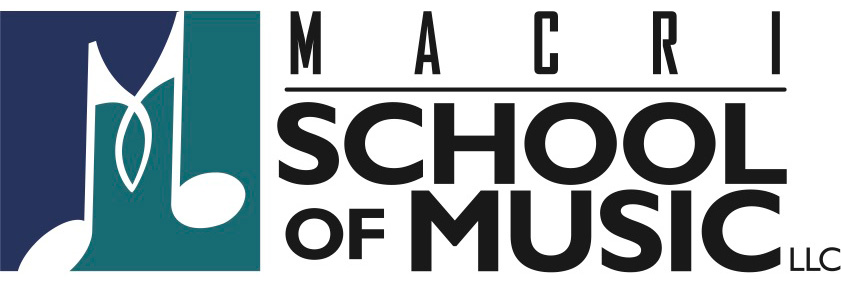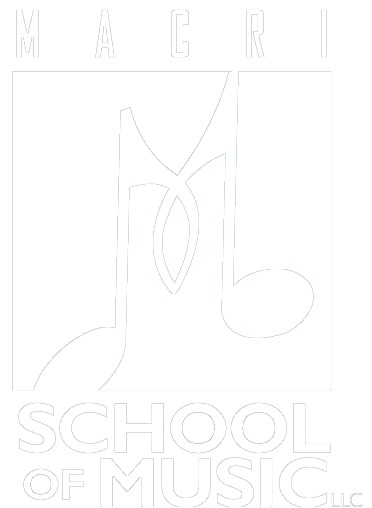Mixolydian Thirds
The Mixolydian mode is a popular choice for soloing in many forms of music. It is derived from the fifth degree or note of the major scale. In the key of C major for example – G Mixolydian would be G,A,B,C,D,E,F,G. It is common to use this sound over dominant 7th chords and in this key the G,B,D,F are your chord tones 1,3,5,b7 and A,C,E are the extensions or colors 9,11,13 respectively.
Ex.1 is a common fingering for the scale with the root note starting on the 6th stg.
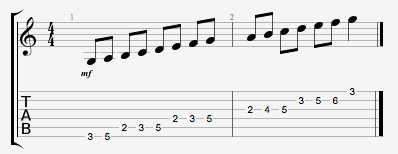
Ex.2 is the scale shown in a three note per string pattern.
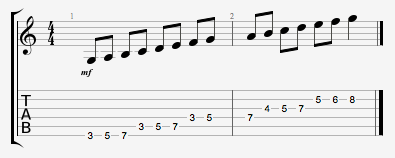
Once the scale is under your fingertips lets approach it in an intervallic fashion. Playing though a scale with intervals creates exciting sounds and is great for finding new fingerings and patterns on the guitar. An interval is defined as the distance between two notes and we will use thirds to play through the Mixolydian mode. If we start on any note in the scale and skip over the next note, a major or minor third will be produced. For example, G&B creates a major third and A&C create a minor third.
Ex.3 is G Mixolydian played in thirds ascending (up) and descending (down). This is one position but it could be played in any area of the fretboard.

Ex. 4 is the first four bars of an uptempo blues in G. It starts with a pickup and in the first measure the line consists almost entirely of thirds.
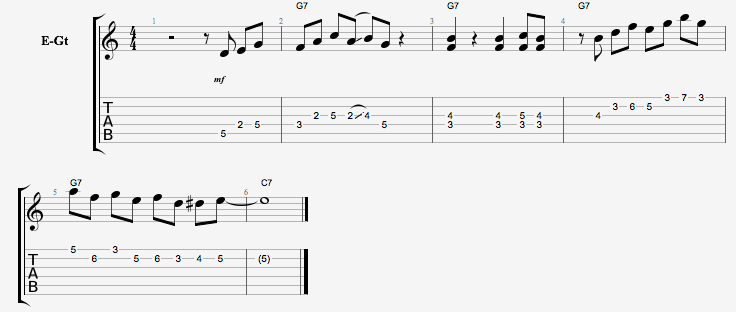
F to A is a maj 3rd, A to C is a min 3rd, etc. The second bar has some guide tones for self accompaniment and that is followed by a similar motif to the first measure. The last bar has some of the initial pattern in Ex.3 and then adds a passing tone on D# that leads to E which is the 3rd of the approaching C7 chord.
Ex. 5 is a shred approved pattern, inspired by a Paul Gilbert string skipping lick I learned many years ago. It is in E mixolydian and played in the 12th pos. It consists of many third intervals played with hammer ons and pull offs as well as an E maj triad. Start slowly with this challenging lick and listen for consistent volume between the picked notes and the legato notes.
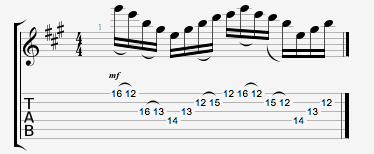
There are endless possibilities for interval inspired lines and patterns. It is a great way to add life to any scale and perfect for motivic based improvisation.
